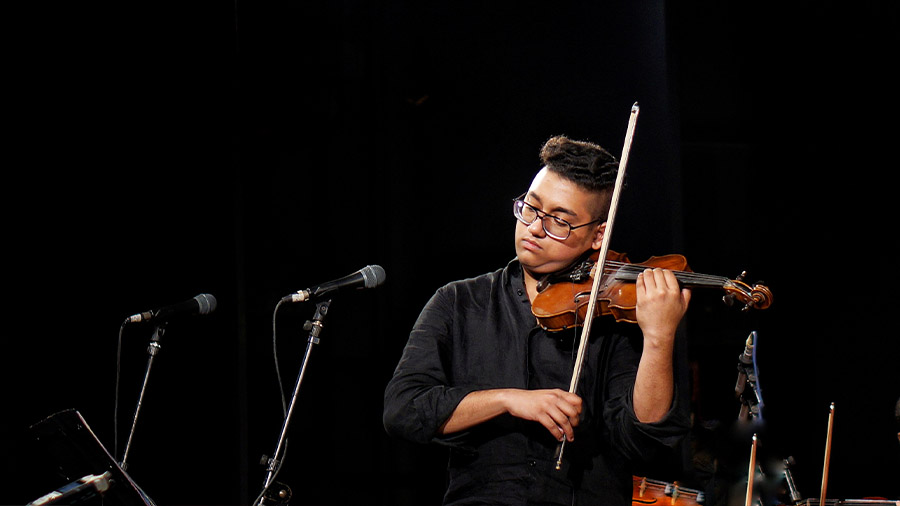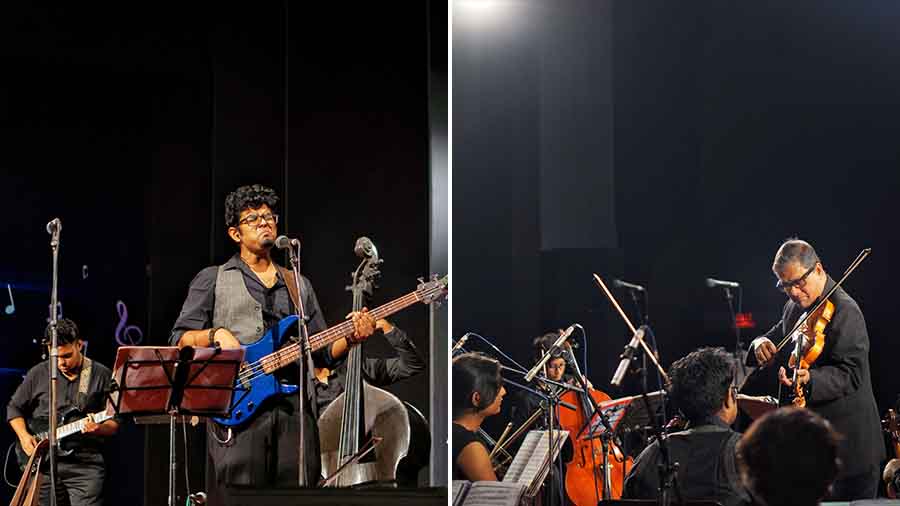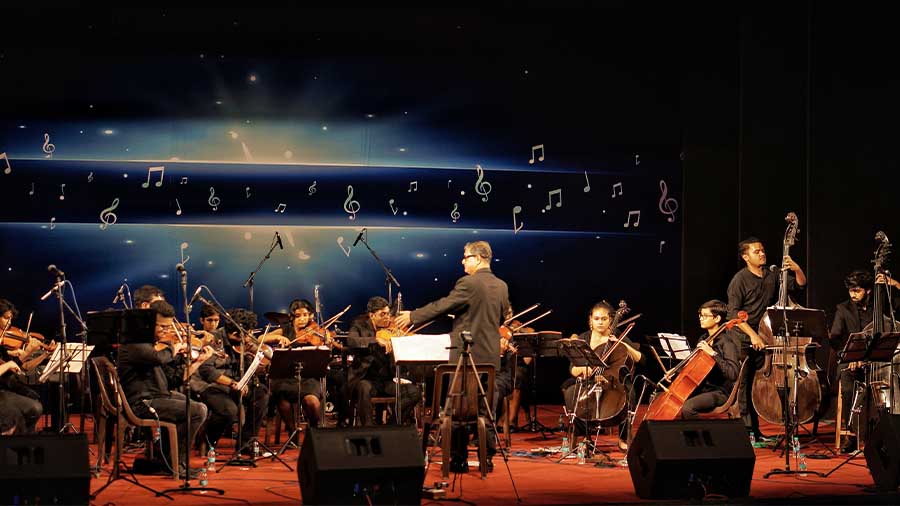‘Baroque to Beatles’ was the theme of the evening at Kala Mandir on November 26, at a concert by the Abraham Mazumder Academy of Music. There are some things you can always expect at Abraham Mazumder’s concerts. Firstly, even if Calcutta traffic is letting you down, you know he's going to lift his baton right on time and you run the risk of missing Rondeau by Henry Purcell – which is the second thing you can be sure of at his concerts. The programme is nearly always likely to begin with this English composer’s famous second movement, from the music he wrote for a play by Aphra Behn, penned in 1676: Abdelazer: The Moor's Revenge. Composed in the era which came to be known as Baroque, it was a fitting start to the evening.
This was followed by a grand marker of the Baroque era: Music for the Royal Fireworks by Georg Friedrich Handel, who held the position of Composer to the Royal Chapel. King George II, eager to celebrate the end of the War of the Austrian Succession in 1748, expressed a preference for martial instruments over fiddles for the occasion. Handel, however, did include strings to balance out the wind instruments. Now in Kolkata, almost three centuries later, we find maestro Abraham Mazumder arranging the original score of La Rejouissance (the fourth movement, in Allegro) to be string-heavy. The effect is marvellous. Handel appeared again, in the orchestra’s stormy rendition of the Rabindrasangeet, Kharobayu boy bege, where Tagore’s melody was juxtaposed with a portion of Messiah.
From the classical period, we had the sprightly first movement of Eine kleine Nachtmusik, (‘A Little Night Music’) — one of the most well-known pieces by Wolfgang Amadeus Mozart. The piece, originally written for a string quartet, was published posthumously and attained great fame. Although formally titled Serenade No. 13 in G, Mozart’s own short description for it in German, jotted next to the composition, is what has prevailed over the centuries.

The young cellists and double bassists
From the Baroque period, we also had Summer by Antonio Vivaldi, where the orchestra accompanied Mazumder’s son Anirban, who displayed great skill with this difficult and fast-paced allegro. An unexpected addition for the audience was the cadenza he introduced in his solo – his own composition. The Four Seasons was inspired by landscape paintings, which explains the evocative nature of the music. The four concerti (Spring, Summer, Autumn, and Winter) all comprise three movements and it is believed that Vivaldi himself composed sonnets to go with all the movements. Listen carefully for the call of the cuckoo, the turtledove and the goldfinch in the gentle summer breeze before the erratic north wind comes storming in.

Anirban Mazumder
Anirban Mazumder, along with Dwaipayan Dasgupta, performed the solos for Vivaldi’s Concerto for Two Violins in A minor. The two boys were as animated as the tempo of the first movement, their enthusiasm momentarily stemmed by a torn string – possibly every soloist's nightmare but once the string had been restored, the violins resumed their spirited dialogue. Vivaldi is known to have developed the structure of the then-emerging concerto, paving the way for Bach, who was deeply influenced by the work of the ‘red priest’.
Russian composer, Pyotr Ilyich Tchaikovsky represented the Romantics, with the orchestra playing the theme song – Dance Of The Swans – from the Swan Lake ballet – its haunting melody and ominous buildup of the underlying strings portending the destinies of the cursed swans Odette and Odile.
The second half of the concert, which was cut short because of time constraints, comprised popular music ranging from Beatles to Mohiner Ghoraguli. Calcuttans who have closely followed Mazumder’s career, will know that both bands have always featured prominently in his concerts. After Imagine and Bhalobashi, the concert wrapped up with violinists and cellists swapping their classical instruments for guitars during Hotel California, the drums ending the evening with quite literally a big bang.

Musicians playing at the concert
Versatility has always been the hallmark of Mazumder’s orchestra; he has turned many a musically-inclined child into a multi-instrumentalist, guiding young violinists to becoming cellists, violists, bassists and of course, guitarists. What’s more, it’s evident that the young members of this orchestra are enjoying themselves as much as their audience.
